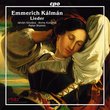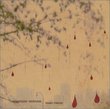| All Artists: Charles-Marie Widor, Daniel Schweizer, Zurich Symphony Orchestra, Ulrich Meldau Title: Charles-Marie Widor: Sämtliche Symphonien, Vol.9 Members Wishing: 0 Total Copies: 0 Label: Motette Records Release Date: 3/28/2000 Genre: Classical Style: Symphonies Number of Discs: 1 SwapaCD Credits: 1 UPCs: 089504024125, 4008950402413 |
Search - Charles-Marie Widor, Daniel Schweizer, Zurich Symphony Orchestra :: Charles-Marie Widor: Sämtliche Symphonien, Vol.9
 | Charles-Marie Widor, Daniel Schweizer, Zurich Symphony Orchestra Charles-Marie Widor: Sämtliche Symphonien, Vol.9 Genre: Classical
|
Larger Image |
CD DetailsSimilar CDs
|
CD ReviewsRomantic and Neo-Baroque (Move over Saint-Saens) Thomas F. Bertonneau | Oswego, NY United States | 08/06/2001 (5 out of 5 stars) "French musical Romanticism is a peculiar phenomenon about which we still know relatively little. Hector Berlioz surmounts the scene early in the nineteenth century, with his "Symphonie fantastique" and other scores, and César Franck floats in angelic mist over the fin-de-siècle, with his ecstatic tone-poems and seraphic keyboard compositions for piano and organ. Between these two, there are a handful of opera composers, most notably Jules Massenet, and one high-profile figure, Camille Saint-Saens, who essayed, in addition to opera, the purely instrumental genres. The rest has remained obscure. In his lifetime, Charles-Marie Widor (1844-1937) seemed an impressive and important composer. Famous chiefly as the organist at Saint-Sulpice in Paris, he composed ten organ symphonies (so-called), some of which cling to their place in the repertory to this day. (Every music aficionado will know the concluding Toccata from Widor's Organ Symphony No. 5.) Yet Widor wrote copiously for other media, including the orchestra, and in many genres, including opera. Even before his death, however, he seemed to critical opinion to have withdrawn into the arrière-garde; his longevity probably worked against him. Despite this, as items from Widor's large oeuvre resurface in a new century the prior dismissal begins to seem hasty and prejudicial. Widor ingeniously applied a Romantic harmonic language - somewhere between that of Schumann and Lalo on the one hand and Liszt and Franck on the other - to devices inherited from the Baroque. This tendency shows itself in an exemplary manner in the organ symphonies, which make use of fugue, aria, toccata, and the other polyphonic procedures of the eighteenth century, often on a larger scale than would have been attempted by one of Widor's classical precursors. Similarly in his orchestral music, which frequently involves the organ, Widor disposes an archaizing sense of form; he likes the old contrapuntal ethos of Bach and Handel. The Symphony for Organ and Orchestra, Opus 42, that Widor wrote for a London performance in 1894 at the behest of the Prince of Wales (later King Edward VII) exemplifies his peculiar fusion of the old and the new. The composer borrows from his own work - from his symphonies (nos. 2 and 6) for organ alone - recasting the music by dividing it between what is now a concertante instrument and the supporting orchestra. In three movements, Opus 42 opens with a splendid Allegro. The first subject is given out boldly by the organ without accompaniment and is then restated in concert with the orchestra; it is rhythmically marked and quite memorable. A more complex second subject involves rapid passage-work for the keyboard, echoed in the strings and winds. Widor's orchestration is lavish, his development rich and logical. The slow Second Movement (Andante) generates itself out of a long-lined cantilena. The Finale returns to the splendors - to the fanfares and bold gestures - of the opening Allegro. This is a remarkable late-Romantic symphony which manages to be serious as well as spectacular. The Allegro Vivace for Organ and Orchestra is the First Movement of the Organ Symphony No. 5 , arranged by American organist Frank Stewart Adams in 1924. Too bad that Adams did not apply his sure hand to the Symphony's other movements - an amplification on the same scale of the famous Toccata would be especially welcome. (A version adding brass and percussion circulated on LP about twenty-five years ago.) Organist Ulrich Meldau gives a demonic performance helped ably by the Symphonic Orchestra of Zurich under director Daniel Schweizer. For fillers we get "La Chasse" and "Trois Nouvelles Pieces" for organ solo, the latter being very nearly the last score that Widor composed. Motette's balance engineers deliver first-class sound, full and rich, and no doubt hard to achieve with such overpowering forces. Highly recommended."
|

 Track Listings (8) - Disc #1
Track Listings (8) - Disc #1


